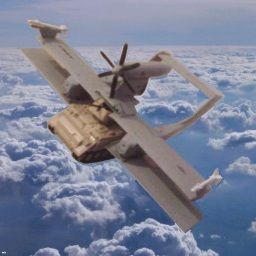Dafuq is a manpad? Is that for when your asshole is bleeding?
MAN-Portable Air Defense (System). Basically a tube with optics that you can use to fire an anti-air missile from your shoulder. Stinger and Strela are some examples
I mean, I made a similar claim saying car radar detectors would light up if you got locked by an aircraft or fox 3 missile radar lol.
Assuming the bands are correct, you have a semi functional RWR.
Car radar decetors are all so old-fashioned these days since the world is full of diverse threats. IR/Laser as well.
I want to build a modern RWR into my car and start profiling all the ELINT around me in 360 like “hey that’s a volvo coming over the hill” rather than just beeps.
source for the information in the title: i made it up, or did i?
I the sensor is just a 128x96 monochrome camera and it’s fairly trivial to programmatically determine where IR lights are at in the frame. The processor just needs to scan through 12,288 pixels, find the center of a cluster of bright pixels and return coordinate. It’s not a complex operation, but the devil is in the details: I suspect you would still need to overclock the hell out of it to process over 60fps. Manpads are fast with the Stinger clocking in at about mach 2. As the missile gets closer to the target, it wouldn’t take much of a delay to screw things up.
So sure, if you spend the cash on a quality glass, you could do a ton with that sensor. It’s probably years ahead of what was on the original Stinger, actually.
It might work, but the use-cases are extremely far apart here.
Also the accelerometer only goes to some 3.4 G which you get really easily.
I had a whole paragraph about that, but deleted it. The question focused on the IR sensor and processor so that put many other components out of scope.
Consumer grade MEMS sensors would probably just implode at those forces, but I can’t really speak to that.
Edit: While I was thinking more about this, it makes complete sense that any circuits would be analog, especially for that time period. With military hardware, durability and reliability is paramount**, so a stinger probably would use something way less complicated than a camera. I don’t know for certain, but that is most of the magic of military tech in general.
** lol. I actually said that. Replace “reliability” with “survivability” and that sounds cooler.
IR homing sensors before the digital age where a piece of analog signalpath art. Its mostly rotating a singular ir sensor in 45degree and then mapping the inputs rotation compensated to the control surfaces. Simple at core but cant tell the difference between a jet exhaust, the sun, or a flare.
Modern version are boring is a High resolution ir cam and some blackmagic AI picking targets apart from flares.
3.4 G.
Not great. Not terrible.
you don’t need to check everything. let’s say that spot is 10px wide, then you can check every 8th pixel meaning now you only need to check 16x12 px. then, maximum is gotta be in one of these 8x8 squares around shiny pixel, so you can sample middle of each to find out where it might be. then, scan that 8x8 square pixel by pixel to find maximum
this might be reason for not using absurdly good optics
Ok, that is smart. That would probably get the logic fast enough to keep up with the sensor “refresh rate” when pixel values are buffered from each sensor pixel. (My knowledge of digital camera sensors is a bit primitive. I read (or watched?) something a few months ago about image tearing caused by sensor scanning. This might matter, to a small degree? Dunno.)
My guess was that the lenses would be for filtering through whatever IR band is important and it’s those coatings that are the quality bit: https://www.edmundoptics.com/c/ir-lenses/655/
I am wondering if you can get lenses crafted specifically for jet engine IR signatures. If so, that would really boost the capabilities of any sensor…





